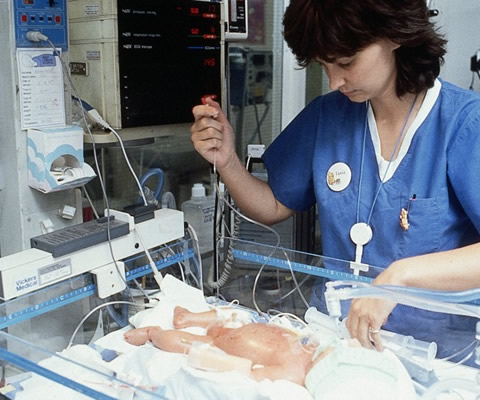Acute Pain in Children course



This session describes the principles of delivering effective analgesic management to children in acute pain associated with ongoing illness, surgery, trauma or painful procedures in a clinical setting.
Learning Objectives
By the end of this session you will be able to:
- Summarize the basic concepts of good acute pain management in children
- Recognize the importance of analgesic planning and communication
- List the general principles of managing procedural, medical, traumatic and postoperative pain
- Recognize the effect of development on analgesic use
- Explain and be able to apply the concept of multimodal analgesia
It is possible to provide effective and safe acute pain management to children of all ages in a variety of clinical settings.
Glyn originally trained at St Bartholomew’s Hospital and continued with his specialist training in London.
He has published in a number of areas on the subject of Paediatric Pain, including developmental and genetic factors affecting the use of opioids, treatment of postoperative pain in children and the treatment of medically-related pain in children.
Glyn is a content author for both the e-LA and e-PAIN projects.


Anoo has practiced exclusively in newborn care for 15 years and for the last 10 years in the Regional Neonatal Care Unit in Bristol. He manages the care of newborn babies every day in the postnatal ward and in intensive care ranging from routine care of a well baby, to delivery room management, to a complex very sick baby. In his current post he sees approximately 700 admissions to the newborn unit per year and 6500 normal deliveries.
He has a Doctorate of Medicine for his postgraduate research into topical Amethocaine gel. In addition, he has 15 peer reviewed publications in Newborn Care, including two chapters in a standard Neonatal Textbook (Roberton Textbook of Neonatal Medicine).
Anoo has a longstanding interest in pain management in newborn babies and is a content author for the e-PAIN project.

- Anaesthesia | Transfer | Modes of Transport
- Posted By eIntegrity Healthcare e-Learning
- Posted Date: 2024-12-22
- Location:Online
- This session considers the transport options available to critical care teams for the secondary and tertiary transfer of critically-ill patients.
- Anaesthesia | Sepsis | Resuscitation and treatment...
- Posted By eIntegrity Healthcare e-Learning
- Posted Date: 2024-12-22
- Location:Online
- This session describes the initial resuscitation for the patient with sepsis and septic shock. It focuses on the resuscitation and initial cardiovascular management of sepsis.
- Anaesthesia | Sepsis | Assessment and differential...
- Posted By eIntegrity Healthcare e-Learning
- Posted Date: 2024-12-22
- Location:Online
- This session describes how to assess a patient with suspected sepsis and recognize the differential diagnoses in suspected sepsis both on admission to hospital and in hospital.
- Anaesthesia | Sepsis | Sepsis Pathophysiology
- Posted By eIntegrity Healthcare e-Learning
- Posted Date: 2024-12-22
- Location:Online
- This session provides an overview of the pathophysiological processes that underpin normal immune response to infection. It then outlines how these contribute to the development of sepsis.
- Anaesthesia | Recognition of the critically ill pa...
- Posted By eIntegrity Healthcare e-Learning
- Posted Date: 2024-12-22
- Location:Online
- This session defines the mortality rate for patients admitted to ICUs in the UK and discusses important aspects of severity of illness scoring systems that are applied to this population. This session also looks at the longer-term non-mortality outcomes e







